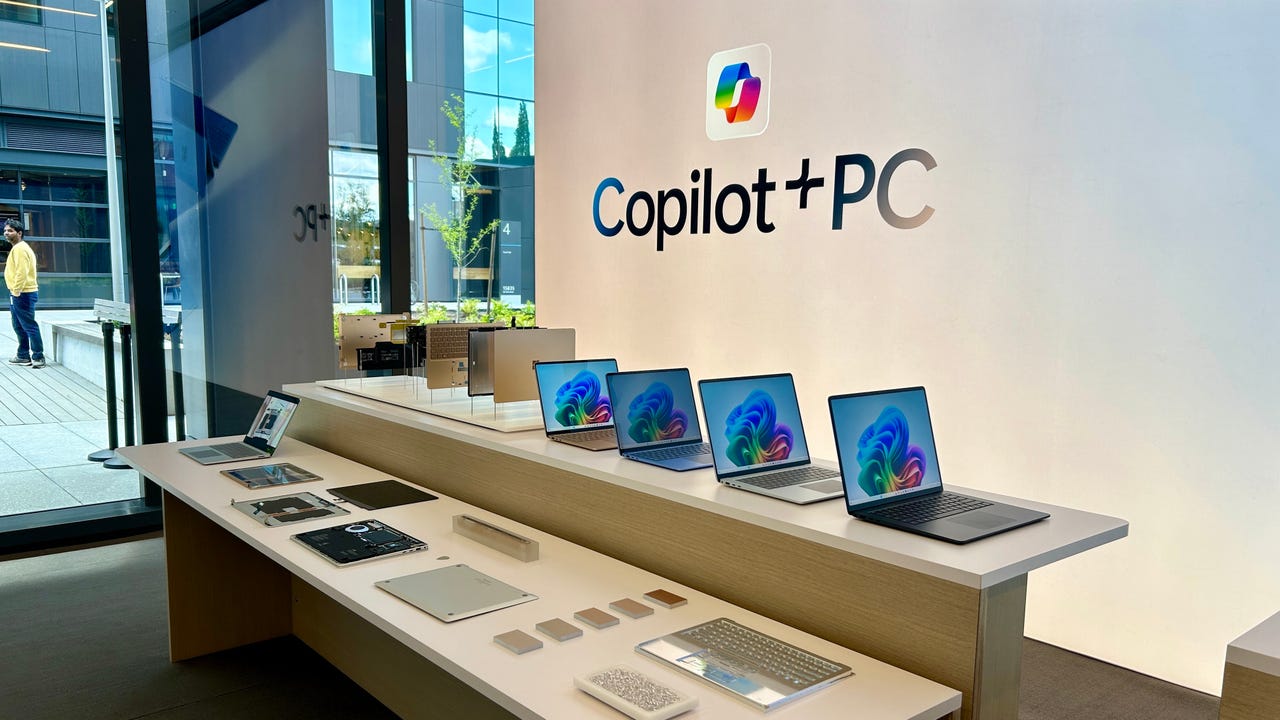www.zdnet.com
Sabrina Ortiz/ZDNETThe artificial intelligence (AI) boom is transforming industries and reshaping work. Now, it's setting its sights on a long-overlooked tool: your work laptop.The reach and capabilities of AI models go far beyond what people have seen from tinkering around with ChatGPT, which, although a great tool for proofreading or debugging code, only gives a brief glimpse into what large language models (LLMs), the technology powering tools like the chatbot, can do.Also: What is an AI PC exactly? And should you buy one in 2025?For instance, HCLTech, a consulting firm, worked with one of the largest end-to-end healthcare providers in the US to help implement a user-friendly, compliant AI clinical advisor. The clinical advisor, trained using one of the world's largest clinical libraries, allows medical professionals to conversationally ask for the information they need to consult without wasting time digging for it.According to Alan Flower, EVP and head of AI & Cloud Native Labs at HCLTech, running the models locally on the device was key to effectively implementing this model.Also: Nvidia dominates in gen AI benchmarks, clobbering 2 rival AI chips"By using the clinician's laptop, it frees up clinician time whilst also ensuring the privacy and security of the patient's information," said Flower. "It has that secondary advantage -- it reduces the cost to run the solution since we're not consuming expensive cloud tokens when we can use the neural processing unit on an AI PC, effectively, for free."Flower said that since implementing the AI clinical advisor, within a typical 20-minute consultation with a doctor, the AI clinical advisor has freed up three minutes from the appointment, time the doctor can spend researching and focusing on the patient's care.Also:With AI models clobbering every benchmark, it's time for human evaluationCompanies are discovering that if they want to take full advantage of AI and run models locally, they need to upgrade their employees' laptops. This realization has introduced a hardware revolution, with the desire to update tech shifting from an afterthought to a priority and attracting significant investment from companies.This trend is reflected in the numbers. Researcher IDC predicts that AI PCs designed to run generative AI tasks locally will grow from nearly 50 million units in 2024 to over 167 million by 2027, eventually accounting for almost 60% of all PC shipments worldwide. The latest data from analyst firm Gartner suggests 63% of all PCs will be AI-enabled by the end of 2026.This acceleration in PC investment aligns with a decade-long trend, where factors, such as improved design, exemplified by the shift from bulky laptops to ultraslim notebooks, have steadily driven up the average selling price of PCs, an indicator of shifting consumer preferences and market trends, according to Linn Huang, research vice president of devices and displays at IDC.The industry has seen selling prices "steadily climb over the past decade," said Huang. "AI PCs will undoubtedly accelerate this trend in the coming years as new AI-enabled workloads, use cases, and features enter the market."This new category of AI PCs is differentiated from legacy PCs by having an NPU, or neural processing unit, which is designed to turbocharge AI tasks and allow models to run right on the device. The benefits of running locally include cost, privacy, and security.Also:ChatGPT's new image generator shattered my expectations - and now it's free to tryMost AI products, like ChatGPT, send information to the cloud to be processed. This information is then sent back to the device, which allows for the potential for the data to be hacked, leaked, or mishandled in transit.Instead, running models locally gives organizations more control over their information and reduces reliance on third-party services. That setup is crucial for companies in financial services, healthcare, and other industries where privacy is a big concern or a regulatory requirement."For them, on-device AI computer, it's not a nice to have; it's a need to have for fiduciary and HIPAA reasons, respectively," said Mike Bechtel, managing director and the chief futurist at Deloitte Consulting LLP.Another advantage is that local running reduces lag and creates a smoother user experience, which is especially valuable for optimizing business applications. That speed is key because the appeal of AI solutions, like chatbots, is that they can respond at the touch of a button.Device manufacturers are already seeing this growing interest in AI PCs. Microsoft, a major player in the AI market, a key partner of model specialist OpenAI, and the creator of AI tools like Copilot, has introduced a new hardware category called Copilot+PCs, developed with partners such as HP, Dell, and Lenovo.Also:Anthropic launches Claude for Education, an AI to help students think criticallyMark Linton, vice president of device partner sales at Microsoft, said business leaders have shown strong interest in purchasing and trialing these new devices."Leaders are particularly focused on integrating on-device AI capabilities into their broader AI business and technology strategies," said Linton. "This interest is reflected in adoption rates -- 20 times faster than touch PC adoption -- demonstrating the urgency with which organizations are approaching this transformation."The benefits of AI PCs go beyond running AI models on devices. For example, a PC can overheat when it uses a power-intensive application, and the fan may start blowing and the device might begin running slowly. That situation can occur partially because the excessive workload is offloaded to the CPU or GPU, other key components of PCs.AI PCs use NPUs to handle AI tasks more efficiently, reducing the load on the CPU and improving overall system performance. This capability covers non-AI tasks that are compute-intensive, such as editing video or even having a video call.Also:What is Enterprise General Intelligence? How the next stage of AI affects you"AI PCs deliver significant performance improvements for the apps users already use, leveraging new CPU, GPU, and NPU architectures," said Alex Thatcher, senior director of AI experiences, business personal systems, at HP Inc. "AI PCs also deliver significant improvements in battery life due to the inclusion of small cores and highly power efficient NPUs."As the refresh cycle for many businesses' hardware approaches, and its advance is accelerated by other external factors, such as Microsoft's end of support for Windows 10, many organizations are forced to purchase new devices. This leaves one question: should businesses go for legacy or AI-capable devices?Because of the productivity advantages, most industry experts, including Flower or Bechtel, who are in positions to advise clients on the next steps, agree that upgrading to AI-capable PCs is the obvious choice."It's a big brainer: make sure that your next wave of capital expenditure has the set of bells or whistles, else you're going to be considering an extra refresh in the next couple of years," said Bechtel.Also:Microsoft's new AI agents aim to help security pros combat the latest threatsAs more companies get in on the action and AI-capable computers become ubiquitous, the premium price of AI PCs will continue to drop. Furthermore, Flower said the potential gains in performance offset any price differences."In those high-value professions, the productivity gain is so significant that whatever small premium you're paying for that AI-enhanced device, the payback will be nearly immediate," said Flower.Upgrading technology keeps companies at the forefront of innovation, giving them the flexibility to invest in AI applications, whether they're ready to dive in now or not. As more companies opt for AI-capable PCs, this shift paves the way for deeper AI integration into business processes.The result of this investment is an ecosystem where the promise of AI applications drives hardware upgrades, and the upgraded hardware, in turn, accelerates AI adoption in the workforce, rapidly transforming industries and reshaping how professionals work.Artificial Intelligence Editorial standards












